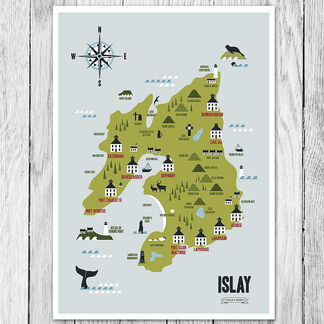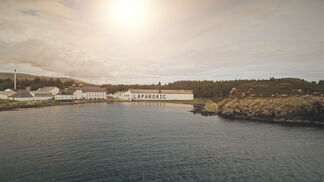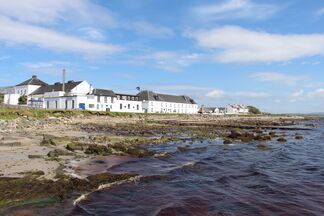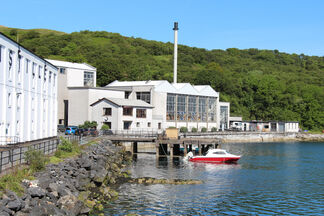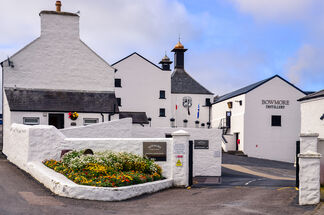The Islay Whisky Region Part 2
A tour of the working distilleries
Islay has a reputation of producing extremely peaty whisky, although there are some rather fine smooth whiskies coming from Islay too. In general, the further South you go on Islay, the more peaty the whisky gets.
There are currently 9 working distilleries on Islay, but there were as many as 23 a few years back. But if things work out, there will be 13 distilleries here in just a few years’ time. But more about that in my next blog entry. This time we are doing a tour of the 9 that are working now.
Islay is not a large island, but the distilleries are easier to look at in sub-regions. These are The Kildalton Distilleries, The Rhinns, North Islay Distilleries and Bowmore.
The Kildalton Distilleries
Ardbeg, Lagavulin, Laphroaig
The distilleries of Ardbeg, Lagavulin and Laphroaig are also called the Kildalton Distilleries. Located in the south-east of Islay, Kildalton is the name of the Parish in which they are located. All 3 produce incredibly peaty whiskies. And as the best known globally have collectively given Islay a reputation of only producing peaty whisky.
Ardbeg was founded in 1815. Well, that was when John Macdougall took out a license and made the distillery legal. Upon the death of his son, Alexander, the distillery was the first to be owned by women – his sisters Margaret and Flora. After a few changes of ownership, Ardbeg closed in 1981 with a loss of 18 jobs. But the demand for Ardbeg for blending re-started distilling on a small scale only 2 years later. After a second closure in 1991, Ardbeg was acquired by Glenmorangie and re-opened in 1997. Since then, it has not looked back and produces some amazingly peaty, award winning whiskies. And they were the first distillery to fire whisky into space to see what happens to it! Want to know? Go buy a bottle of Ardbeg Galileo if you can find (and afford) one!
According to Lagavulin lore, the brand’s distillery is the oldest on Islay, with whisky production taking place illegally as early as 1742.
According to Lagavulin lore, the brand’s distillery is the oldest on Islay, with whisky production taking place illegally as early as 1742. In 1816, John Johnston acquired a license and legalised the distillery. It came to wider public awareness in 1862 when blender John Logan Mackie bought the distillery and his nephew created the White Horse blend in 1890. Lagavulin is a real success story, only closing twice in its history and neither for business reasons – once during world war II in 1941, and again in 1951 due to a fire.
Around 1815 two brothers, Donald and Alexander Johnston, leased 1000 acres of from the laird of Islay, for rearing cattle. That land is now known as Laphroaig. Why another distillery in 1815? Well that is when it was possible to buy a license and it is a reasonable guess that whisky at Laphroaig started well before that! In 1836, Donald bought Alexanders share of the distillery for £350. Unfortunately, Donald died in 1847 and it is rumoured that he fell into a vat of whisky and drowned! Bessie Williamson left Glasgow University in 1932. With jobs being scarce, she ended up with her uncle Willie at Laphroaig. When the last of the family ownership line died in 1954, Bessie was still there and inherited the whole thing. Talk about being at the right place at the right time! She ran it successfully until she retired in 1972, and died only 10 years later. Much of Laphroaig’s success has been laid at her feet.
Rhinns of Islay
Bruichladdich and Kilchoman
The Rhinns of Islay is an area on the west of the island of Islay. It is a peninsula that is attached to the main body of the island by a narrow isthmus towards its northern end. It is home to two distilleries, the Bruichladdich Distillery and Kilchoman Distillery.
Bruichladdich is a story of demise and revival. Built in 1881 by the Harvey brothers, designed as a state-of-the-art distillery in its day. Sibling rivalry and a family feud left just one brother to operate Bruichladdich. Bruichladdich struggled to generate a profit for many years also experiencing several periods of closure. It changed ownership many times and finally closed in October 1993.
In 2000, the distillery was reopened by a private group of investors led by former wine merchant Mark Reynier, with infamous Jim McEwan as Master Distiller. Jim extended the classic Bruichladdich, which is an un-peated whisky, by reviving peated single malt production and introduced the Port Charlotte and Octomore brands. Octomore is the peat giant in the range, Port Charlotte is peated, but to a lesser degree than Octomore. The distillery is highly experimental with casks and has many limited edition bottle releases. Bruichladdich was sold to Rémy Cointreau in 2012 and Mark Reynier went on to found Waterford Distillery in Ireland.
Founded in 2005, Kilchoman was the first new distillery to be built on Islay in over 124 years. Anthony Wills, Kilchoman Founder, set out to resurrect the grass roots tradition of farm distilling. They do it all, from growing the barley in their own fields, malting the barley in their own malt house, through to fermentation, distilling and maturation all on site. It is a distillery that has grown out of an Islay farm. Very traditional. A true gem of a distillery. For a new kid on the block, they are really turning out some great, mainly un-peated whiskies.
North Islay Distilleries
Caol Ila, Bunnahabhain and Ardnahoe
The North of Islay now has three distilleries. Caol Ila and Bunnahabhain were joined in 2019 by Ardnahoe Distillery.
Caol Ila is located overlooking the strait between Islay and Jura. It was founded in 1846. In 1863 the business was acquired by Bulloch Lade & Co, of Glasgow. In 1920 Bulloch Lade went into voluntary liquidation, and a consortium of businessmen formed the Caol Ila Distillery Company Ltd keeping Caol Ila open. The distillery closed during World War II, from 1942 to 1945. Production continued until 1972, when the entire structure of the distillery was demolished. A larger distillery was then built and production resumed in 1974. The company eventually became part of Diageo.
The Bunnahabhain distillery was built in 1881 at the height of the Victorian period. Its construction, even now, reflects the optimism, the scale and the grandeur that exemplified Great Britain’s Victorian Age. It was designed to mimic the layout of a Bordeaux chateau and its buildings are arranged around a central square. Being extremely remote, the site included a shop and a school. The site was so remote that a one-mile long road had to be built to connect the distillery with the island’s road network. And it had its own port in order to ship casks out to the mainland.
Full production started in January 1883 and began with un-peated whisky. The great depression caused it to close between 1930 and 1937 and it operated on a part time basis from 1999 to 2002. Market pressure and business need forced Bunnahabhain to produce heavily peated whiskies for blending until 1960. At which point they turned back to un-peated whiskies but still focussed on supplying the blenders. Bunnahabhain started bottling single malt whiskies in 1970 and the transition began. It continues to experiment with peated whisky. Rather than being oily and pungent, Bunnahabhain’s current peated offerings are dry and light with a pronounced peppery influence.
Ardnahoe - Stewart Laing and his sons formed Glasgow-based Hunter Laing & Co. Ltd - a blender and bottler of scotch whisky - in 2013. With a family background in the whisky business dating back to the 1940s, the family had a strong basis from which to build a distillery. They had a strong affinity to Islay and in 2015 they located the perfect four-acre site by Loch Ardnahoe on the Northeast of the Island. First runs of distillation began in October 2018 with Cask number 001 filled on the 9th November that year. A distillery full of promise!
Bowmore - The Capital of Islay
Bowmore Distillery
Bowmore is the capital town of Islay. Also claiming to be the oldest distillery on the island, Bowmore was started producing whisky in 1779. It produces a smoky, salty dram and is one of the most famous Islay Distilleries worldwide. It is home to one of the world’s oldest Scotch maturation warehouses, the No. 1 Vaults. It’s in this legendary warehouse that Bowmore single malts have been meticulously matured and transformed for over 240 years. The distillery is home to a surviving bottle of Bowmore from 1880!
Bowmore ceased production in 1940 as the distillery was commandeered by RAF Costal Command to help with the efforts during the Second World War. Three squadrons operated from the distillery between 1940 – 1943. How the heck did that 1880 bottle stay un-opened?! In 2012, the 1957 expression was released – the oldest Islay single malt ever released. Matured in the No.1 Vaults for 54 years, only 12 bottles exist making this an extremely rare whisky. Try buying one of those!
